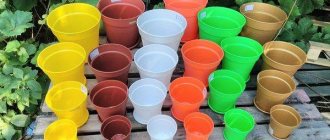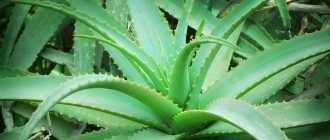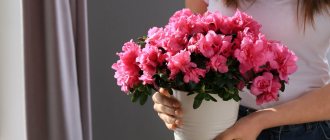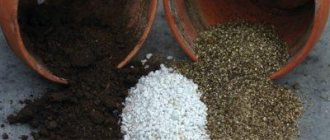Author of the article: Anna Vladimirovna | Updated: 02/20/2022
Set of cleaning products Synergetic Clean Home + GIFT
863 ₽ More details
Set of cleaning products Synergetic Clean Home + GIFT
863 ₽ More details
Floor wax
Begonia is a beautiful plant with a delightful aroma that can decorate not only your home, but even a flowerbed or park. This plant is characterized by a small shrub height - about 25 cm in height. Initially, begonia was grown only in closed greenhouses, and a little later breeders managed to develop species that were resistant to different climates. In our article we will talk about how to plant begonia at home, what its varieties are, how to prepare the soil, and what container to prefer.
How to plant
Almost all flowers of this variety, grown at home, are unpretentious, easy to propagate, and the variety of their colors and shapes of variegated petals decorates and enlivens any room with their presence. Growing begonia at home is extremely interesting.
It grows quickly, in up to 3 months. To be able to admire the flowers at the beginning of summer, it should be planted in March or even February. To plant begonias at home, no special preparation is required. This is done immediately into the prepared pot where it will grow, or into a special peat pot, which should later be placed in its place of permanent residence.
These wonderful plants need to be bred indoors, but in the summer they can be placed in open ground, where they will be at ease and will delight you with abundant flowering throughout the entire summer period. For such a crop, you will need to choose the optimal size pot, as well as worry about the normal composition of the soil and then provide proper care for the plant.
It should be remembered that begonias of various species remain dormant throughout the autumn and winter. Caring for them in summer involves generous watering. But at the same time, proper care does not require flooding the plant too much. In winter, such a flower generally requires watering in moderate quantities when providing comprehensive care. It is recommended to carry it out with warm water. With normal care, the room temperature should be 14 - 22 degrees. Replanting begonias with such care is required as needed. Take care of timely application of fertilizers.
How and when to fertilize begonias?
Begonia, no less than other types of ornamental plants, needs feeding, protection, and replenishment of substances necessary for growth, budding and flowering. Today, manufacturers produce a huge number of different types of fertilizers. They all differ not only in shape, but also in composition, so each one has its own effect. Which of them to buy depends on what mineral salts and microelements a particular plant lacks.
Experts recommend purchasing traditional Begonia fertilizers, which are intended specifically for this type of flower. Kemira Lux contains all the necessary substances in balanced quantities. The table below provides information about several more popular types of fertilizers that are intended specifically for begonias.
Begonia tubers are placed in a small and shallow pot
We offer an overview of fertilizer for begonias.
| Drug name | Release form | Impact |
| "Aquarin" | Liquid fast-acting concentrate | Stimulates the growth and development of plants. Promotes the development of leaf apparatus, full and long-lasting flowering |
| "BIOPON" | Liquid. Contains phosphorus, potassium and other important substances | Ensures growth intensity, prolongs flowering time, accelerates bud formation |
| "Gilea" | Dry fertilizer | Increases the resistance of begonias against diseases, rot, hypothermia, and preserves leaves. |
| "Garden of Miracles" | Liquid | For long lasting flowering |
| "Hello turbo" | Powder | Stimulates the growth of the root system, replenishes the lack of all important plant nutrients |
Types of planting
Many novice gardeners are interested in how to plant begonia correctly? It is not difficult to do this at home if you have information about planting methods and follow some rules. You can plant such a plant yourself, using its parts such as stems, tubers, leaf cuttings, as well as vegetatively.
Tuberous begonia is propagated at the end of August. To do this, the plant is dug up with a clod of earth. It will need to be dried. A large tuber is formed due to the fact that the leaves gradually dry out in the fall. During wintering, the tuber is placed in a box with sand or peat. Do not forget to periodically moisten the substrate. In spring, the tubers can be planted in the ground.
When planting, the lower part of the tuber should be at the bottom, since the buds are located on the top. It is permissible to divide an adult tuber into several - this way you can actually get many young plants. When vegetatively propagating flowers, children cut off the top of the begonia up to 7 cm long, which is placed in a special powder for rooting. Then the baby is moved into a small pot of soil, which contains peat and coarse sand in equal proportions. The pot is covered with film, and a month later a new fathom starts sprouting.
After this, the plant should be transplanted into a permanent pot. When choosing the type of planting by dividing the tuber, it is cut into a couple of parts so that each has a bud. The cut area is sprinkled with ash; after this, it would be correct to plant the particle in moist soil. Then the pots are covered with film, placed in a bright room, and after rooting the plants are planted in containers for permanent residence. This crop should be fed properly.
When planting begonias with leaf cuttings, the leaves of the plant are cut into squares, which are placed vertically in the substrate. After a couple of weeks, the cuttings, covered with film, will take root, then the cover is removed for ventilation. After which the young plants are planted - each in its own permanent pot. When planting such a magnificent flower with stem cuttings, they are taken with at least 2 nodes. A cut is made, a hole is created in the substrate, into which the future flower is inserted. It is covered with a bag, rooting occurs in 15 - 30 days.
Planting a tuberous begonia flower
The technology for planting tuberous begonia is simple. It is easier than planting work with ordinary plants, whose roots or shoots are easily damaged. Tubers often do not yet have either one or the other. This is why inexperienced gardeners make mistakes at this stage, incorrectly determining where the top and bottom are.
Important ! The crown is a crater, a depression, a concave part of the tuber. Taking a closer look, they observe the embryos of future buds and a dried stump from last year’s shoot in this very part of the rhizome. The whole secret of future care is to control the condition of the top-recess: no water should get here. And from the reverse - convex, rounded - part the roots will grow.
Soil for begonia
Most soil manufacturers offer targeted soil for this ornamental crop: it says on the packaging: “For begonias.” A special substrate meets the needs of the flower:
- loose;
- breathing;
- easy;
- nutritious.
But a universal floral one will also work if you add a little sand, vermiculite, or peat to it for lightness and looseness.
Selection of pot
To plant tuberous begonia in a pot, choose a container that is shallow but wide. For a flower, diameter is more important than depth, since the tuber sits on top and the roots grow wider. The larger the rhizome, the wider the pot.
If the pot is higher than wider, then it is better to increase the drainage layer to 4-5 cm so that the volume filled with soil is reduced in height. After all, begonia suffers from the slightest stagnation of water, and too high a level of soil in a pot retains moisture longer.
Tuber preparation
The planting material was safely delivered home, the pot and soil were prepared, expanded clay or other drainage was also not forgotten. It's time to carefully examine the tubers to assess their condition. And there will be pre-processing in any case.
To do this, immediately prepare:
- low capacity for etching;
- fungicide (“Augustina for tubers”, Vitaros, potassium permanganate, Fitosporin-M - to choose from);
- scissors and brilliant green - just in case.
While the tubers are dry, they are cleaned of dried root threads. They are easily peeled off with your hands, or you can simply shorten them with scissors. It is not necessary to remove it “badly” - remove only the excess so that it does not interfere with new shoots.
Now it’s easier to inspect the rhizome for damage:
- cuts;
- dents;
- dark spots;
- signs of rotting;
- traces of mold.
Everything must be found immediately to prevent possible risks. Each area that arouses suspicion is treated with brilliant green and allowed to dry.
Dilute the fungicide according to the instructions. If potassium permanganate is used, then the concentration is a beautiful pink solution. Not too pale, but not purple either.
The rhizomes are lowered into the disinfectant so that the nodules are immersed no deeper than “up to the shoulders.” At first, the rhizomes float, but as they become saturated with moisture, they sink. Water is not allowed into the crater with the kidneys. Time - according to instructions, potassium permanganate - a quarter of an hour. For stimulation, add no more than a couple of drops of Epin to a glass of solution.
When the time allotted for pickling is over, the tuber is dipped into the liquid with its concave top. It is important to simply apply the fungicide to the surface and eyes for prevention, and not to wet this part of the rhizome. After dipping, shake off excess moisture so that the liquid does not stand in the recess.
Landing rules
The algorithm is just a few steps:
- Drainage to the bottom.
- The nutrient substrate is poured so that there is still 5-6 cm to the edges of the pot. The soil is not compacted: you just need to level it - when watering, the water will flow to the desired extent.
- Place on top, slightly pressing or slightly twisting the tubers. Hollow up.
- You cannot fill it with soil. They press it into the loose, light soil almost “up to your shoulders” without effort. The concave center remains uncovered.
Water the soil with a separate portion of the same fungicide-dresser, without approaching the tuber - closer to the walls of the pot. The soil will simultaneously receive moisture and undergo preventative treatment.
At this point, the planting of tuberous begonia is completed, and care begins by placing it in a well-lit place.
Soil preparation
Regardless of whether you plan to grow your plants at home in pots or in open ground in the future, you will definitely plant the tuber at home. And only a little later, when your crop gets stronger, grows to a certain level, and there are favorable weather conditions outside, it will be permissible to move it into the soil on your own plot or transplant it into a larger pot.
So that later, for lush and long flowering, you can simply take proper care of your pet. An excellent option for modern gardeners is to purchase a special primer with the optimal composition in the store.
If you know exactly how to properly grow begonia at home and take into account all the nuances, then you can prepare such soil yourself. Its main characteristics should be a loose structure, an increased degree of fertility, and a low level of acidity. The following composition may work well - leaf and turf soil taken in equal parts in combination with compost and perlite. Experts also advise adding rotted humus here in a ratio of 1:10.
Newbie mistakes in caring for begonias
Very often, novice gardeners do not pay attention to changes in the appearance of begonias. This is fraught with serious consequences, so the most common manifestations will be discussed further.
| Manifestation | Cause | Elimination |
| Yellowing of leaves | Excess moisture or lack of light | Move the pot to a more sunny place, adjust watering |
| Leaf fall | Elevated temperature, lack of light | Move the pot to a brighter and cooler place |
| The tips of the leaves have turned brown | The air is too dry | Place the pot on a tray with moistened moss or periodically humidify the air in the room |
| Falling buds | Dry air or excess moisture | Reduce watering or provide air humidification |
| Brown spots on the leaves, which then develop a grayish coating | High air humidity | Remove damaged leaves and then spray with fungicide |
Tip #2. With a lack of moisture or its excess, begonias experience the same symptoms: the plant withers, the stem, as if wet, softens, begins to bend, the leaves droop. To find out what happened, you need to pay attention to the earthen lump. If it has become like a stone, then there is clearly a lack of moisture. If it is very soft and damp, the root has rotted.
Which pot to choose
If you decide to propagate this magnificent plant yourself at home and provide it with normal care in the future, a completely understandable question arises - how to choose a pot for such flowers? Cuttings that have already begun to take root are planted in 5–6 cm containers, which must have several drainage holes.
After waiting about 6 months, when the root system has already entangled the earthen ball, the begonia should be transplanted into a larger container. During this period, experts advise purchasing a pot measuring 8 - 10 cm. If the first planting was carried out in the spring, then after a year the crop should be placed in an even larger container. It is determined by the grower independently, based on the size of the formed root system.
This vessel must be one third larger than the one in which your pet currently lives. You cannot plant begonia in a container that is too spacious the first time - this can result in rotting of the delicate root system of the plant. It is recommended to plant the flower gradually, using the transfer method, each time I monitor the condition of the roots and remove a third of the old soil from the container.
Deciduous types of flowers are usually called decorative deciduous. When individual specimens have grown too much, they need to be transplanted into new beautiful containers. In this case, you yourself must choose a beautiful pot for your pet. You just need to remember the rules of planting, drainage and all the nuances of subsequent care for this amazing indoor plant.
Selection of begonia tubers
It is recommended to choose large bulbs for planting, 3 cm in volume or more. The more powerful the tuber, the stronger and more spectacular the plant will be. Before purchasing, inspect the appearance of the planting material:
- the surface should be smooth and shiny;
- a good tuber has a high density;
- There are no noticeable damages, black spots or dry spots on top.
IMPORTANT: Some bulbs have several growing points. Therefore, when planting, they are cut into 2-3 parts if desired. But make sure that there are at least three sprouts in one section.











